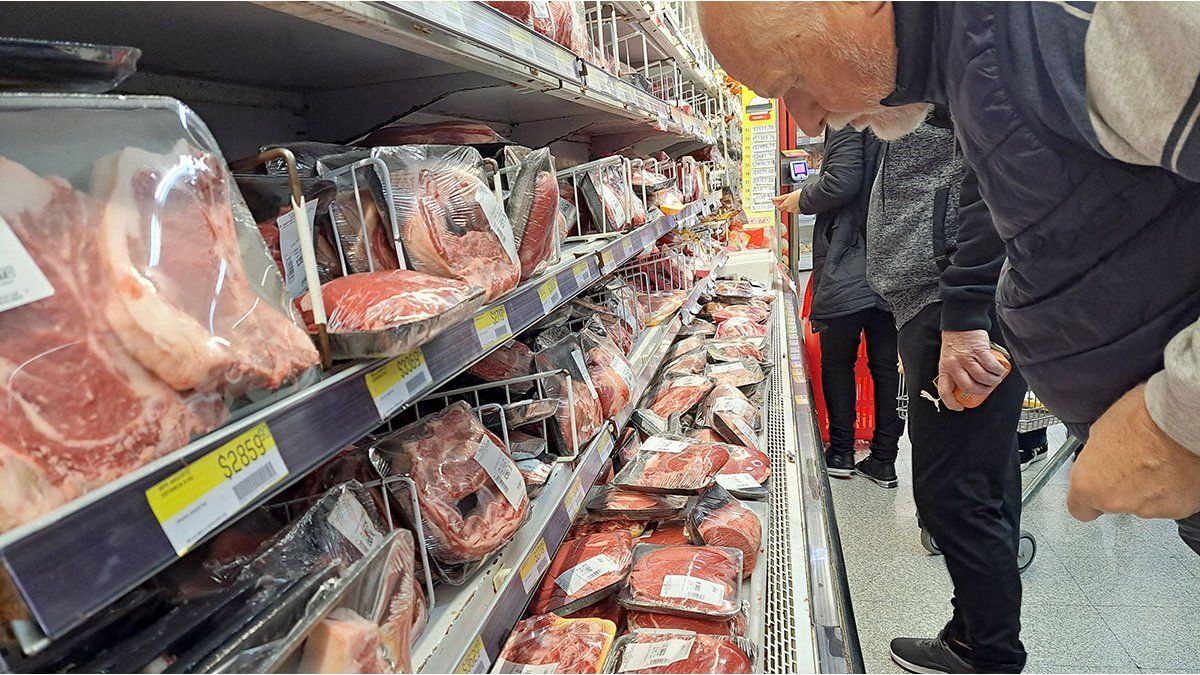A lower supply of property, since much of the work was brought forward in the previous months as a result of the drought, added to the uncertainty prior to the elections and the rains of recent days, generated upward pressure on the values traded in the Cañuelas market . So much so that last week the average value of live animals rose 13%, and this week began with a new increase of 5.4%.
These increases would be transferred to the counter in the short term. This was stated by Sergio Pedace, director of the Argentine Chamber of Matarifes and Suppliers (CAMYA): “We had anticipated that by these dates there would be a lack of livestock. The price, which at the time fell due to several factors, is strengthening and the butcher shops are receiving increases, which are going to be transferred to shelves.”
When referring to the amount that can increase the price of meat at the counter, in television statements Pedace He estimated that it could increase between “10 and 15%.”
Along the same lines, the Chamber of Meat Industry and Commerce (CICCRA) highlighted that the lack of supply as a result of an advance in slaughter in the first months of the year left the last increases, which are around 20%, and assured that at least part of it will be passed on to consumers.
The possible increase in the price of over-the-counter beef will add pressure to inflation, both in the October indicator and in the coming months. This is what Hernán Letcher, director of CEPA, told Ámbito a few days ago: “One of the issues to which we must pay attention is how the price of beef on the counter evolves. Last month, for the first time in recent years, it had a very particular characteristic: the price at the treasury dropped – on average 1% – and rose at the counter by almost 20%.”
“In October, the treasury rose again, so the question is whether last month’s increase in the counter discounted the increase in treasury this month, or if it will go up again. ANDsince beef has a great impact on the CPI, its behavior can determine whether an additional point and a half or two points are added to inflation, or if it does not have them.Letcher noted.
In recent months, the price of beef grew above the general level of inflation, thus reversing the trend that was observed during the first part of the year, a fact that precisely led to growth in consumption levels.
For example, in September, the average price of beef cuts reported by INDEC rose 12.9% above the general level of the CPI. A reality that could impact consumption.
Consumption
In line with production levels, as CICCRA noted in its latest report, although consumption grew again in relation to 2022 data, in recent months the improvement slowed.
“In the first nine months of 2023, beef production registered an increase of 6.8%“, they pointed out from CICCRA, and detailed: “It is important to highlight that the extraordinary drought that hit the main producing areas of the country between the beginning of last spring and the middle of this year, caused the shipment from farm to slaughter to grow almost systematic, more than compensating for the continuous drop in the average hook weight. This allowed meat production to grow year-on-year. Instead, In the last three months, the systematic drop in cattle slaughter caused a decline in meat production”.
Meanwhile, the entity maintained that in the first nine months of the year exports grew 9.9% compared to the same period in 2022. “In this way, in the period considered The apparent consumption of beef in our country would have increased by 5.6% compared to that observed in January-September of last year. However, and in line with the dynamics of production and exports, in the third quarter of the year the number of tons delivered to the domestic market would have been 4.5% lower than that sent in the same quarter of last year.” , they explained.
However, in September of this year the moving average of the last twelve months of apparent beef consumption was 50.4 kg/inhabitant/year, standing 3.7% above the amount recorded in September of last year.
Source: Ambito




